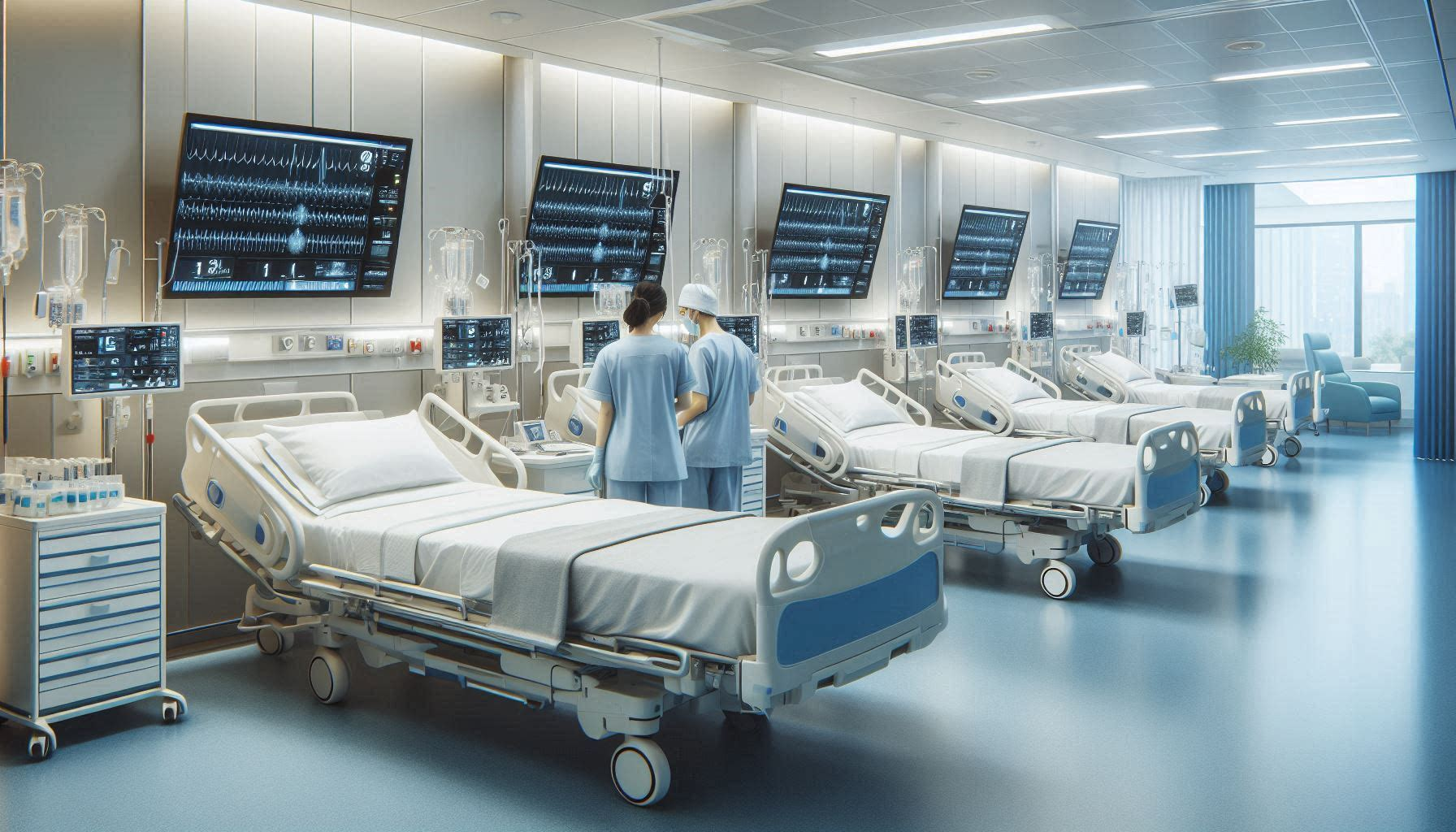In the high-stakes environment of an Intensive Care Unit (ICU), every piece of equipment plays a vital role in patient care. Among these, ICU beds stand out as essential tools in supporting patients with severe respiratory and cardiovascular conditions. These specialized beds are not just places for patients to rest; they are sophisticated medical devices designed to enhance treatment, prevent complications, and improve patient outcomes.
The Evolving Role of ICU Beds
ICU beds have come a long way from their basic predecessors. Today’s models are equipped with advanced features specifically tailored to address the unique needs of critically ill patients, particularly those with respiratory and cardiovascular issues. These beds are integral to the comprehensive care provided in ICUs, working in tandem with ventilators, monitors, and other life-support equipment.
Key Features Supporting Respiratory Care
For patients with respiratory difficulties, ICU beds offer several crucial features:
- Adjustable Positioning: ICU beds can be easily adjusted to elevate the patient’s head and upper body. This position, known as the Fowler’s position, helps to expand the lungs and improve oxygenation. It’s particularly beneficial for patients on ventilators or those at risk of aspiration pneumonia.
- Trendelenburg and Reverse Trendelenburg: These positions involve tilting the entire bed to place the patient’s head lower or higher than their feet. The Trendelenburg position can help in certain respiratory emergencies, while the reverse can assist in reducing intracranial pressure and improving lung function.
- Lateral Rotation: Some advanced ICU beds offer automated lateral rotation, gently turning the patient from side to side. This feature helps prevent the accumulation of secretions in the lungs, reduces the risk of ventilator-associated pneumonia, and improves oxygenation.
- Integrated Percussion and Vibration: Certain ICU beds come with built-in percussion and vibration therapy systems. These can help loosen and mobilize respiratory secretions, making it easier for patients to clear their airways or for staff to suction them.
Cardiovascular Support Features
ICU beds also play a crucial role in managing patients with cardiovascular conditions:
- Cardiac Chair Position: This position allows the patient to be seated upright in bed, which can help reduce cardiac workload, improve breathing, and facilitate better blood flow.
- Weight Monitoring: Many ICU beds have integrated scales that can continuously monitor the patient’s weight. Sudden weight changes can indicate fluid retention or loss, crucial information for managing heart failure patients.
- Bed Exit Alarms: For patients at risk of falls due to cardiovascular instability, bed exit alarms alert staff when a patient attempts to leave the bed unassisted.
- CPR Mode: In case of cardiac arrest, ICU beds can quickly flatten to a horizontal position and provide a firm surface for effective chest compressions during CPR.
Infection Control and Patient Safety
ICU beds are designed with infection control in mind, a critical aspect for patients with compromised respiratory or cardiovascular systems:
- Easy-to-Clean Surfaces: ICU beds are constructed with materials that can withstand frequent cleaning and disinfection, helping to maintain a sterile environment.
- Pressure Redistribution: Many ICU beds come with advanced mattress systems that help prevent pressure ulcers, a common complication in immobile patients.
- Side Rails and Fall Prevention: Adjustable side rails and low bed positions help prevent falls, which can be catastrophic for critically ill patients.
ICU beds are far more than just a place for patients to lie down. They are sophisticated medical devices that play a crucial role in supporting respiratory and cardiovascular care in the intensive care setting. By providing optimal positioning, facilitating necessary therapies, and integrating with other ICU technologies, these beds contribute significantly to patient care and recovery. As medical technology continues to advance, we can expect ICU beds to evolve further, incorporating new features to meet the ever-changing needs of critical care medicine. For healthcare providers, understanding and utilizing the full capabilities of these advanced beds is key to providing the best possible care for their most vulnerable patients.






